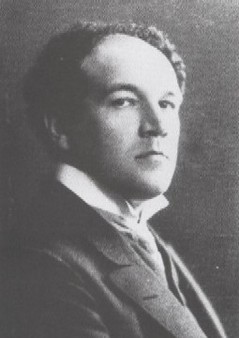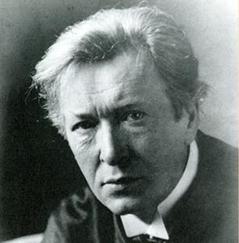During the semester I rain forth repertoire on my students, and sometimes when I get a free moment I just obsessively need to hear something I don’t already know. A Christmas DVD of Cavalli’s Calisto, one of my favorite operas, put me in an early Baroque mood, so I digitized all my Cavalli and Carissimi and Cesti vinyl, and remembered that I had always wanted to be more familiar with Biber, so I discovered his two requiems, which are supremely beautiful, especially the F minor. Then I saw a reference to Nicolas Medtner, literally just his name, and suddenly realized that I had never satisfied my curiosity about the Medtner piano sonatas. They have a cult following, and since I’ve always hoped my music would acquire a cult following, some band of intrepid enthusiasts to run around claiming that it’s not as bad as people think, I’m always on the lookout for models in that respect. So IMSLP.org has all the Medtner Sonata scores, and I could listen to them through the Naxos web site that Bard subscribes to, and I approached them the Scorpionic way I approach everything: I listened to all 14 of them back-to-back.
And I love them. I’m a sucker for meandering chromatic piano music anyway. Sometimes I think that as the son of a piano teacher I just find the sound of the instrument comforting, it almost doesn’t matter what you play on it. But I’ve always considered the Scriabin sonatas a little formally timid, and Medtner leaps in where Scriabin fears to tread. His textural details are often quite original, and in his “Night Wind” Sonata Op. 25/2 he has an entire movement in a natural-sounding 15/8 meter, cleverly inflected with hemiolas:
Â
Â
It’s great stuff, and I am now officially a card-carrying Medtner cultist. He may suddenly be my favorite Russian ever besides Stravinsky, and I hardly think of Stravinsky as Russian.
At the same time, I can see why Medtner has never gone mainstream, and never will. Except for the rather immature Op. 5, stylistically, those sonatas are much the same. Supposing I want to hear (or play) Medtner, which sonata do I choose? Hearing them all in four and a half hours, they could just as well have been one piece; which movement went with which sonata didn’t make much audible difference (and I’ve given several of them repeat listenings, with and without scores, and played through movements). There are lots of wonderful harmonic sequences, broken by reappearances of dotted-rhythm motifs. Some are stormier than others, some are multi-movement, some long, some short, but it’s a 280-minute mass of solid Medtner. The music doesn’t breathe much, and no real adagio ever appears. He had a tremendously sophisticated language in which he could sit down any time he wanted and write more Medtner. But with a few exceptions (mostly the early Op. 11 trio of sonatas and the late Sonata-Idylle, I think, and the “Night Wind” has some distinctive material), he didn’t have “an idea” for each sonata which differentiated it sharply from the last sonata. Like Bruckner and his symphonies, Medtner pretty much had one sonata in him and wrote it 14 times, and I don’t mean to disparage either composer in the least, for I yield to no one in my Bruckner worship. But it does mean, I think, that the listener’s attention is drawn more toward Medtner as a style than toward, say, the Sonata Manicciosa as a discrete piece.Â
Let’s go back to this blog’s default composer Feldman for a moment. Feldman had it all. He had an instantly recognizable style. At the same time, think about how distinct three of his orchestra pieces are from each other: Turfan Fragments, Coptic Light, For Samuel Beckett. No one who knows those pieces would confuse them on a drop-the-needle test. (Kids, dropping the phonograph needle on a record was what we used to do with vinyl, to enliven our cave parties.) Within his well-defined idiom, Feldman could create a striking image for each piece that set it apart from the rest of his output. Or to take a competitor with whom Medtner would have been all too familiar, Beethoven’s Sonatas do not dissolve into Beethoven-language. I could be in a mood to hear Op. 111, or Op. 90, in which Op. 53 or Op. 57 would just not fill the bill. It’s not true of every Beethoven’s sonata, but the best of them each define a small (or large) world.Â
It is a trap that some composers fall into (and there are so many of them, aren’t there?, traps, I mean) that they can develop a language and then sit around writing pieces in that language. A piece is not simply nine yards of a given composer’s language snipped off from the rest – it’s a thing with its own bounds and unity and personality. Years ago Boulez made some statement about having “perfected his language,” and I wrote an article with the sub-headline, “Pierre Boulez perfects his language – but does he have anything to say?” Music and language are analogous in various respects, and the fallacy that music is only a language is so seductive that it sucks certain people in, letting them forget the fact that much of what we remember and most savor in music are specific sonic images. The composer may have a big impact – but his or her pieces may be individually forgettable.Â
And, from whatever congenital impulse that’s hardwired into my amygdala, that’s a trap I am more averse to than some of the others. I am driven to make each piece as individual as possible. I hate repeating myself. I have a big bag of quirks, but I don’t think I possess “a language.” Every major piece I start seems to require a new way of composing from me, which is why I often spin my wheels for awhile when I first get started. I probably overemphasize with my students that they think about what “the idea of the piece” is. It could be called a more “objective” kind of composing, because the entire emphasis is on the object, and I am always willing to abnegate any usual composing tendencies I think of as mine to achieve what the piece needs. And perhaps, avoiding that Scylla, I fall prey to the Charybdis of not having an individual enough composer profile.Â
There are historic composers, some among my favorites, like me in this respect. Nancarrow rarely repeated anything. A kind of “Nancarrow style” is imposed on our perception of him by the fact that 51 of his pieces were for the same peculiar instrument, but in my book on him I list 26 good ideas that he used once and never touched again. He could be tonal or atonal, jazzy or abstract, chaotic or elegant, and any permutation of those. Or to take a more directly apposite contrast to Medtner, Ferruccio Busoni is one of the most piece-oriented composers ever. If you’ve heard of him at all, you know he has a big romantic piano concerto, and some sonatinas, but the concerto is in a complete different idiom from the sonatinas, and the sonatinas hardly match well enough to constitute a set (one atonal, one Bach-like, one based on Carmen for gosh sake), and the string quartets and operas are something else altogether. Busoni is one of my very favorite composers, and even I can’t make the Romanto-Moderno-Neoclasso jigsaw puzzle of his output fit into a picture. Each piece has an impact, but Busoni himself has a fuzzy reputation.
Of course, the preferable thing would to be like Beethoven or Feldman or Stravinsky, and write memorable pieces within your own distinctive style. But it doesn’t seem that we get to choose where we fall along this continuum, whether it is decided for us at birth by the structure of our neural system or imposed upon us from without by the opportunities we’re given. Still, who says that that coveted middle position will make you everyone’s favorite composer? Some of us are drawn to artists whose strengths are less obvious. If I’m offered the position as my generation’s Busoni, I’ll leap at the chance. And I suppose what I’m saying is that there are advantages on both sides. I can listen to Steve Reich and say, “Boy, I wish my music had that clear a profile”; but I can also listen to Medtner – and love every note of it – and still say, “Boy, I’m glad my pieces don’t all blend together.”



